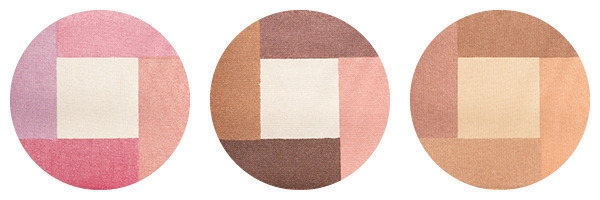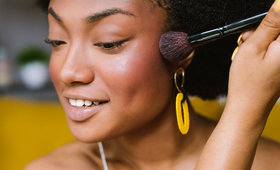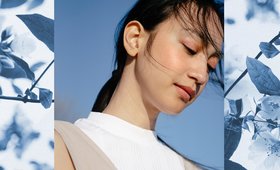Building Your Kit Part 14: How To Pick Blushes And Bronzers
Published Oct 15, 2013

Blush is the ultimate fashion victim. Every trend cycle, lip and eye colors are always evident somewhere on the face, but blush tends to come and go from season to season. That doesn’t mean it hasn’t made a lasting impression: the broad-painted purple stripes of the ‘70s, the aggressive Dynasty/Alexis Carrington contours of the ‘80s, the barely-there skin tones of the '90s, and the Sex and the City apple shape of the early oughts. Today, blush products are essential for modern looks, and more versatile than ever, and can be used to contour, shade, or shape the face.
When it comes to what products to keep in your kit, you need to think expansively. What shades will you want on the face? What range of skin tones will you be working with? And most importantly, what’s your personal take on blush and its effects? Here are some guidelines for you to find a collection of blush that not only expresses your vision, but also gets the job done!
It's also important to note that I’m a fan of both cream and powder blush, and carry a combination of the two formulations. My only rule is to steer clear of too much shimmer, sheen, or texture. You want to add warmth and a natural glow, not make someone look like a Twilight vampire sparkling in the sun.
Colors
Red and Pink

When it comes to choosing pink and red shades, I think about the depth of the skin I'll be working on. I suggest you carry a palette of matte colors with a range that runs from soft to deep reds and pinks. Before I even apply foundation, I like to flush the apple of the cheek with a cream color or fake blood (which makes a great cheek tint) to give the skin a nice glow. Then, when I apply the blush, I like to keep the red toward the apple of the cheek. It creates a look similar to what you get after having a glass of wine.
Peach, Orange, and Coral

Anything in the orange family is great for adding heat or warmth. Typically I use these colors on the high point of the cheekbone for a perfect sun-kissed glow. Tip: add a deep bronze to an orange to create more of a natural tan look.
Brown, Tan, and Taupe

These colors work best when you keep them below the cheekbone or where you want to shade, shape, or contour. You can create the illusion of having a thinner face or even correct and balance facial features—in a natural way. I prefer to work with cool undertones with my taupe and brown blushes. Think of it like the shade of a tree: you want a color to look like the actual shadow that’s being cast by light.
Bronzers

Probably the most abused product in any palette, bronzer should only be used to add a glow that feels (and looks) natural, and not like makeup. When applying bronzer, keep it to the highest point of the cheekbone, the forehead, down the center of the nose, and the chin to fake an instant glow. For those with a pink or red skin tone, red-based bronzers work well as a natural flush color. They can also improve the look of a natural suntan as it starts to grey out and fade. Yellow-based bronzers are the ultimate product for adding a sun-kissed glow to the face.
Highlighters

An easy way to get a youthful, dewy complexion is to add a color that's just slighter lighter (one to three shades) than the skin tone onto the high planes of the face. Highlighters are meant to be used to open the face up and bring a feature forward or make it look larger. Add highlighter to any areas where you want to create a “wow” factor.
_Don't forget to read the rest of James Vincent's Building Your Kit series here! _
Photo: Image Source
As Director of Artistry for The Makeup Show, The Powder Group and On Makeup Magazine, makeup artist James Vincent has touched every facet of the industry with his talent. With specialties in film and theatre, television and celebrity work, editorial and runway work, James is foremast a passionate educator, training for brands such as MAC, Stila, CNN and Lancome. He continues to inspire the next wave of artists with his beauty expertise. Follow James on Twitter @JVincentmakeup.
Featured Products
-

Inglot
Face Blush
/ 10
You Might Also Like
-

Building Your Kit
Building Your Kit Part 22: Red Carpet Beauty Secrets
- 835
-

Building Your Kit
Building Your Kit Part 9: How to Choose and Apply Faux Lashes
- 1685
-

Blush
Sunburn Blush: How to Fake Sunkissed Summer Skin
-

Building Your Kit
Building Your Kit Part 16: All About Powders!
- 1451
-

Bronzer
Our Top Powder Bronzers for Sun Kissed Summer Skin
- 110
-

Blush
The Key To Layering Different Blush Finishes
- 1
-

Bronzer
Easy Summer Looks With Cream Blush and Bronzer
-

Building Your Kit
Building Your Kit Part 26: Everything You Need for Airbrush Makeup
- 575




















